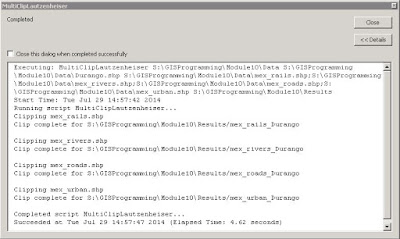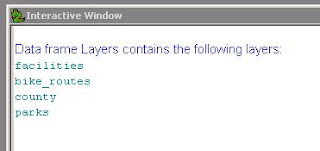|
Three Mile Buffer Zone around Boston Marathon Finish Line
with Nearest Hospitals and Finish Line Perimeter Security Checkpoints |
Lessons learned from the 2013 Boston Marathon bombing have prompted increased security measures by the Department of Homeland Security. These measures include increased security at ingress and egress points as well as improved surveillance around the event site for monitoring purposes. The first map created for this exercise shows a 3-mile buffer zone around the Boston Marathon finish line, a 500-foot buffer around the finish line, the locations of the ten nearest, currently operational hospitals with emergency rooms, and their 500-foot radius protective buffer zones within which increased security measures prior to, during, and following the marathon can be planned. Fifteen security checkpoints on local and secondary roads leading to the finish line are shown at the outer limit of the 500-foot buffer zone around the finish line as shown on the smaller inset map. Identification verification and backpack checks could take place at those locations.
The second map focused on specific locations suggested for placement of surveillance equipment within the immediate vicinity of the finish line itself. LAS Dataset 3D View and the orthoimagery layer were used to determine where to place the 15 potential surveillance points. Prior to point selection, hillshade was generated for 2:30 pm on April 15, 2013. Shadows impact surveillance equipment's capabilities, and hillshade provided a baseline for the day of the marathon. A difficulty encountered during selection of surveillance locations was determining a set of locations that would provide complete coverage of the finish line vicinity as determined by using the Viewshed tool. Viewshed is an indicator of visibility from other vantage points, in this case, surveillance locations. Believing that cameras placed along roof lines or on the sides of buildings would provide that coverage, initial points were placed in that manner. However, to obtain fairly contiguous coverage, the points had to be adjusted not only vertically but also horizontally. Not knowing the heights of the buildings in the area was a disadvantage, but taking advantage of Google street view as well as researching commercial building heights in general provided some guidelines to estimate reasonable, attainable heights for surveillance cameras. Using 3D GIS techniques to determine locations of surveillance points is significantly more economical, effective, and efficient time-wise than physically selecting, inspecting, and adjusting potential surveillance points.
|
|
| Suggested Locations for Surveillance Points near Boston Marathon Finish Line |
The biggest roadblock that I encountered in trying to assemble a comprehensive security analysis for the marathon came with the inability to complete the line-of-sight portion of the lab. Even with meticulous attention paid to the line-by-line instructions and completing the work in one session (having been forewarned), I could not get a line of sight to show up between any pair of selected points (any surveillance point and the finish line). Redoing the map from the very beginning several times, including completely re-downloading the data again did not improve the situation. This resulted in an incomplete map as a profile graph could not be made for a nonexistent line of sight. Having a profile graph would have enabled a surveillance team to further evaluate potential surveillance points. For instance, the horizontal location of the obstruction can be determined by the aerial view, but how the obstruction possibly could be lessened by the vertical adjustment of the surveillance camera can only be determined by a side view shown with a profile graph.
A 3D version of the map was created in ArcScene using the finish line raster as a surface layer. The orthoimagery layer was draped over it as well. Because I did not have any lines of sight to put in the ArcScene portion of the lab, I added the finishline and suggested surveillance points, hoping that the surveillance points would be placed at their offset heights. That did not happen. Again, the actual line of sights are an essential part of a security analysis like this.
Even though I was unable to complete the lab as intended, the experience was extremely worthwhile. The numerous repetitions of certain steps have helped reinforce key aspects of the lab.




















